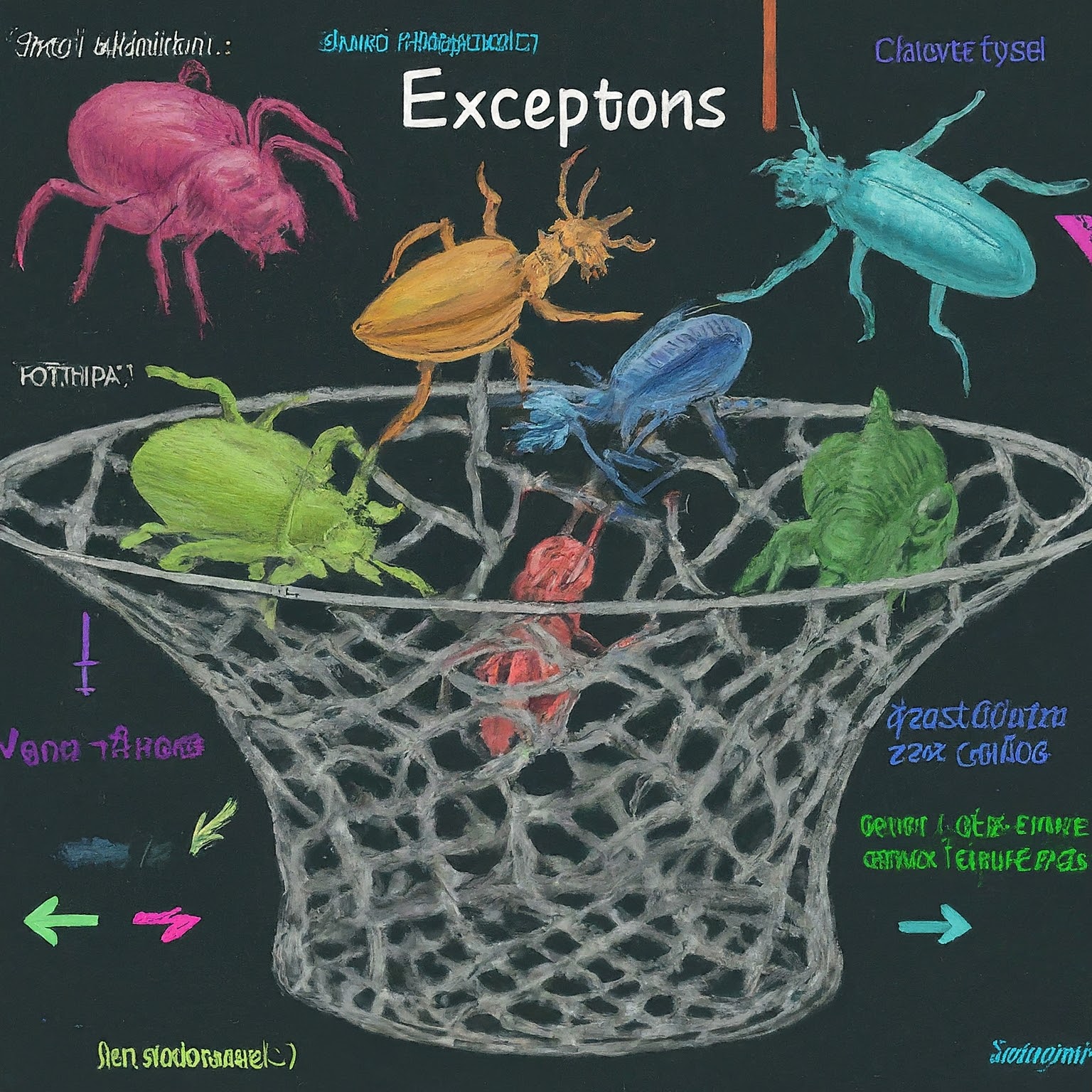Exception handling is a critical aspect of robust software development in C# and the .NET framework. Properly managing exceptions ensures that your applications can gracefully recover from errors, provide meaningful error messages to users, and maintain reliability. In this blog post, we will explore Exception Handling in C# DotNet Programming, explore best practices, and discuss advanced techniques to handle exceptions effectively.
Understanding Exceptions in C#
What is an Exception?
An exception is an unexpected event or error that occurs during the execution of a program, disrupting the normal flow of operations. In C#, exceptions are represented by objects derived from the System.Exception class.
Types of Exceptions
C# distinguishes between two main types of exceptions:
- System Exceptions: These are exceptions that are thrown by the CLR (Common Language Runtime) and are not related to specific .NET classes.
- Application Exceptions: These are exceptions that are explicitly thrown by application code to indicate specific errors or exceptional conditions.
Exception Hierarchy in C#
All exceptions in C# inherit from the System.Exception class. This class provides properties such as Message (providing a description of the error), StackTrace (providing the call stack at the point where the exception occurred), and InnerException (providing the nested exception).
Basic Exception Handling in C# DotNet Programming
Try-Catch Block
The most common way to handle exceptions in C# is using a try-catch block. This structure allows you to attempt risky operations inside the try block and catch any resulting exceptions in the catch block for appropriate handling.
try
{
// Risky operation that may throw an exception
int result = Divide(10, 0); // Example of division by zero
Console.WriteLine($"Result: {result}");
}
catch (Exception ex)
{
// Catching the exception and handling it
Console.WriteLine($"An error occurred: {ex.Message}");
// Additional logging or recovery steps can be performed here
}
Finally Block
To ensure certain code executes regardless of whether an exception occurs or not, you can use a finally block. Code within the finally block runs after the try block and any associated catch blocks, whether an exception is thrown or not.
try
{
// Risky operation that may throw an exception
OpenFile();
}
catch (IOException ex)
{
Console.WriteLine($"Error opening file: {ex.Message}");
}
finally
{
// Ensure file resources are properly closed
CloseFile();
}
Advanced Exception Handling Techniques
Throw Statement
The throw statement is used to manually throw exceptions in C#. This allows you to explicitly indicate errors or exceptional conditions within your application logic.
public void Withdraw(decimal amount)
{
if (amount <= 0)
{
throw new ArgumentException("Amount must be greater than zero.");
}
// Logic to process withdrawal
}
Exception Filters
Exception filters allow you to specify conditions under which a catch block should handle an exception. This provides more granular control over exception handling based on specific criteria.
try
{
// Risky operation
}
catch (Exception ex) when (ex.InnerException is IOException)
{
// Handle specific IO exceptions
}
catch (Exception ex) when (ex.InnerException is SqlException)
{
// Handle specific SQL exceptions
}
Best Practices for Exception Handling
Use Specific Exception Types
Catch specific exception types rather than using a generic Exception catch-all. This helps maintain clarity and ensures appropriate handling based on the type of error.
Log Exceptions
Logging exceptions with detailed information such as stack traces and context helps in debugging and troubleshooting issues in production environments.
Avoid Swallowing Exceptions
Avoid suppressing exceptions without handling or logging them appropriately. Swallowed exceptions can lead to unpredictable application behavior and make debugging challenging.
Graceful Error Messages
Provide meaningful error messages to users when exceptions occur. This helps users understand what went wrong and how to proceed.
Conclusion
Exception Handling in C# DotNet Programming is essential for building reliable and maintainable applications. By understanding the basics of exceptions, leveraging advanced techniques, and following best practices, developers can effectively manage errors and enhance the overall stability of their software. More detailed information can be explored in this article from Microsoft: https://learn.microsoft.com/en-us/dotnet/csharp/fundamentals/exceptions/exception-handling
I hope you found this article helpful in understanding how to effectively handle exceptions in C# DotNet programming. Exception handling is a crucial skill for every developer, ensuring applications are resilient and user-friendly.
FAQs
1. When should I use a try-catch block? Use a try-catch block when performing operations that may throw exceptions, such as file I/O operations, database queries, or network requests.
2. What is the difference between throw and throw ex in C#? The throw statement rethrows the current exception without resetting its stack trace, while throw ex resets the stack trace, potentially hiding the original source of the exception.
3. How can I create custom exception classes in C#? To create a custom exception class, derive from the Exception base class and provide constructors to set custom error messages or other details.
4. What are exception filters in C#? Exception filters allow you to specify conditions within a catch block under which the block should handle the exception.
5. What should I do if I catch an exception but don’t know how to handle it? If you catch an exception and cannot handle it locally, consider logging it and rethrowing it or letting it propagate to a higher level where it can be handled appropriately.

